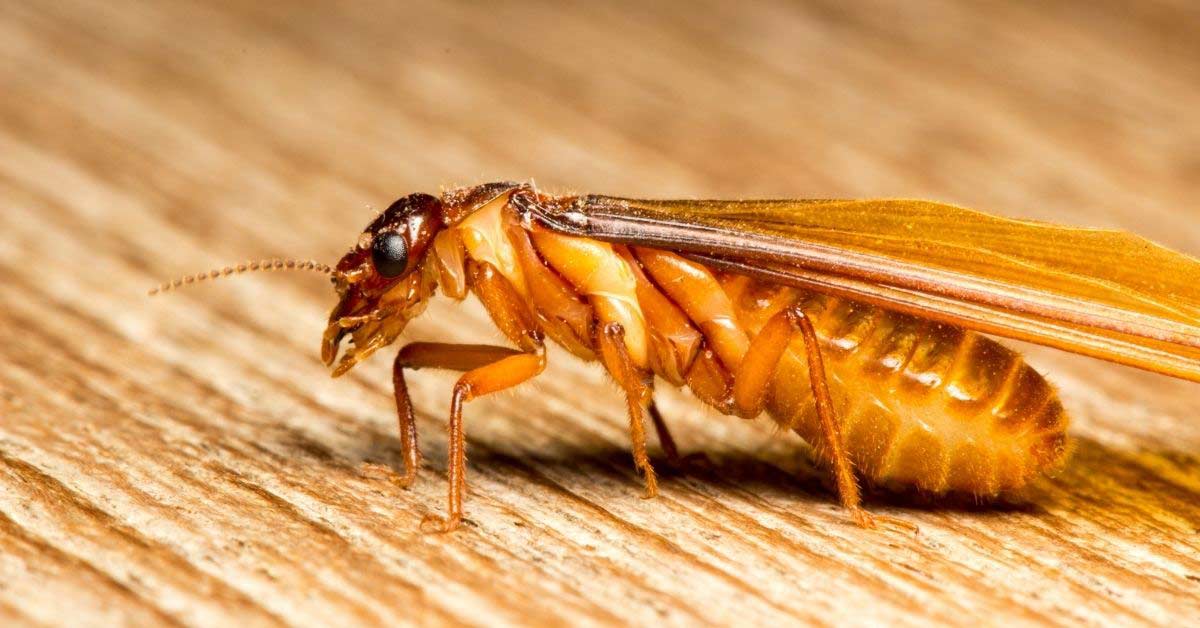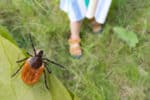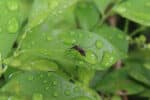
Asian Subterranean Termite Identification
Asian subterranean termites (Coptotermes gestroi) are the enemy of wood structures everywhere in the tropics and South Florida, and they can cause significant damage to your home. Most of us don’t bother to know the differences between termite species in our area, but if you suspect these silent destroyers have taken up residence in your home, identification is the first step to take back your space and protect it from this invasive species.
Eliminating termites is an urgent concern for anyone who suspects they have an infestation. Termites are responsible for billions of dollars in damage to structures every year. Home insurance policies usually don’t cover damages that result from a termite infestation, and homeowners end up paying for repairs out of pocket. It’s crucial to stop these destructive bugs before they do more costly damage to your home.
Read on to learn more about Asian termites in Florida from the Asian subterranean termite experts at Hulett.
Identifying Asian Subterranean Termites
If you suspect a termite infestation in your home, identifying these invaders is key to eliminating them. In South Florida, we have a few types of termites that infest homes, including subterranean termite species. In addition to Asian subterranean termites, you’ll also find Formosan and Native termites. We have a few species of drywood termites, too.
It’s helpful to know how to distinguish Asian subterranean termites from these other species. Formosan and Asian termites are very similar in appearance and can establish large colonies on your property, so we’ll pay special attention to telling the difference between them.
As with all termites, a bug’s appearance varies based on its role in the colony. Every termite colony contains:
- Workers
- Soldiers
- Alates, Swarmers, or Reproductives
Alates often have a more distinguishable appearance than other colony members, and they are usually the members that a homeowner will see first, which makes them helpful for identification purposes.
Workers
It’s very challenging to identify termites based solely on the appearance of these colony members. Termite workers of many species are small and translucent with a whitish coloring.
Soldiers
Asian termite soldiers closely resemble their Formosan counterparts, making it difficult for homeowners to use soldiers for identification purposes. You can tell the difference between these two soldier groups by:
- Hair placement on the head
- The presence of a head bulge
Hair placement differs slightly on soldiers from Asian termite colonies compared to Formosan ones. Soldiers from both species share a tear-drop-shaped head with a large opening on their foreheads called a fontanelle. Asian termites have hairs near the rim of their fontanelle, while Formosans have two sets of hairs around this same area. Unfortunately, it’s difficult to see without a microscope. Another way to distinguish Asian termite soldiers from Formosans is by a distinctive bulge just behind their fontanelle.
Behavior isn’t very helpful for identifying Asian termite soldiers either. Both Asian and Formosan soldiers bite challengers, and both emit white secretions from their fontanelle for defense, and both usually comprise 10 to 15 percent of foraging groups. Homeowners may have more success looking to other colony members like alates or swarmers for identification purposes. We at Hulett understand that this can be an intimidating task. But don’t worry, our inspectors are professionals that are trained by a Board Certified Entomologist to make correct identifications.
Winged Reproductives (Alates)
Alates, or Swarmers, are the colony members that are most useful for identification. Asian and Formosan alates are distinguished by their:
- Coloring
- Antennal spots
- Size
- Hairy bodies
- Two sclerotized veins on their wings
Color can be a helpful point of comparison. Asian alates have a dark-brown head, pronotum, and dorsal abdomen, contrasting with the yellow-brown or orange-brown color of the same segments of a Formosan alate. Their different coloring contributes to another point of identification: the visibility of their antennal spots. Antennal spots are present on the heads of both termite groups, but on Asian termite alates, the antennal spots are visible because they are lighter in color with the head’s dark-brown color. Because there’s no color contrast on Formosan alate heads, the antennal spots are not visible. To put it simply, Formosan termite swarmer’s bodies are more of a uniform yellow, whereas Asian termite swarmers have a darker back, and a lighter yellow colored belly, making them appear bi-colored. Formosan winged reproductives are slightly larger than Asian ones, as well. Asian alates are around a half-inch in size, and Formosans come in around three-fifths of an inch. These differences are helpful for identification.
Often these are the colony members that alert homeowners to a termite infestation when swarmers or winged alates fly off to attempt to establish their own colonies.
Asian Termites in Florida
This subterranean species hails from Southeast Asia, and it has established itself all over the tropical and subtropical globe. It’s a tropical species, so you won’t find it outside tropical climates. Unfortunately, they have established colonies right here in our community. There are several remarkable things about their presence in South Florida.
Asian termites may have found their way here through shipboard infestations on ships docked in our ports. Established, mature Asian termite colonies were first recorded in Palm Beach and Broward counties in 2005. The infestations recorded in Riviera Beach (north of West Palm Beach) represent the northernmost migrations of these pests worldwide, though they appear to have continued to move more north in recent years. These insects continue to thrive in our South Florida communities.
Another remarkable fact about these insects in our region is that we live in the only known location where Asian and Formosan termites occur together. Although their coexistence is fascinating, that spells trouble for homeowners who want to protect their most important asset, their home. Given how challenging it is to distinguish between them, you’re better off leaving identification and termite treatments to the professionals.
LEARN MORE: Find out more about the termites in Florida from the University of Florida’s Institute of Food and Agriculture.
Termite Control Methods for Eliminating Asian Termites
Asian subterranean termites thrive in our tropical climate. When you spot these insects, the best course of action is to contact a professional pest control company. When your home is at stake, it’s not worth risking further damage by pursuing DIY methods.
You may think of tent fumigation when you think of professional termite control, but there are a few less disruptive treatments that may address your problem.
Liquid Treatments
Liquid treatments are odorless and highly effective at eliminating Asian termites. A pest control professional will apply the liquid treatment in the soil around your home. Another specialized product can be applied to the interior if the pests are active indoors. These long-lasting treatments can protect your home from invading Asian termites in the future.
Baiting Systems
Termite baiting systems are another effective treatment method extensively tested on subterranean termites like the Asian termite. Asian termites will enter the baiting systems and take the active ingredient back to the colony, where they share it with the other members. Baiting systems can eliminate these destructive pests in entirety.
Termite control professionals can also advise you on making your property less hospitable to these unwanted insects.
Hulett Environmental Services: Experienced Termite Experts of Asian Termites in Florida
With over 50 years of experience eliminating termites in Florida, our family-owned business has the necessary expertise and tools to eradicate Asian termite infestations. In fact, Hulett was one of the first companies to identify Asian Subterranean Termites in Florida. The rise in Asian and Formosan termites in Florida has been on our radar ever since they first established themselves in the cities we treat, such as Boca Raton, Delray Beach, Boynton Beach, Lake Worth, West Palm Beach, Wellington, Loxahatchee, Riviera Beach, Palm Beach Gardens, Jupiter, Port St. Lucie, Fort Pierce, and many more.
We know termites are formidable opponents. Insects like termites are capable of quickly adapting to their environment. It’s how they’ve been able to endure for so long. That’s why we train all of our technicians on the latest methods and products for eliminating Asian termites. Whenever termites adapt, so does Hulett. You need Hulett in your corner when it comes to getting rid of these hardy pests. Give Hulett a call today to schedule a free inspection with no obligation so a trained professional can discuss with you a termite control and prevention program that makes sense for you and your family after a detailed inspection of your home and property. So if you suspect you may have termites in your area, remember to Just Call Hulett!



